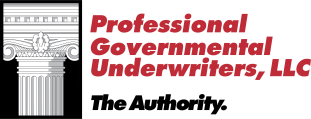Teachers on Social Media: Where Do the Boundaries Fall?

School Board Liability Insurance: Is There A Discipline Imbalance?
February 11, 2019
Are Schools Causing Anxiety and Depression?
February 25, 2019Teachers on Social Media: Where Do the Boundaries Fall?
From Twitter to Facebook, Instagram to Snapchat, live streaming to double-tapping, social media has transformed the way we connect and communicate. It’s made its way into our business lives, health and wellness, political views, and schools. Unfortunately, for the latter, social media has shined a harsh light on what’s appropriate and inappropriate behavior by its users, specifically teachers and administrators who engage with students on the many platforms.
This has brought growing concern to parents, school boards and communities alike, all unsure of how to navigate the pitfalls of their children connecting and interfacing with teachers. This has opened the door to many legal risks and liabilities for not only the educators, but the school districts they operate in. So, where do the boundaries fall?
The Pros of Social Media
Some teachers, including those who are younger and just out of college teaching for the first time, view things like texting, personal emails and social media as quick and efficient ways to communicate with students. Social media has primarily been used to post discussions, ask questions and instill a feeling of community among students and their peers.
Social media has also helped students who would have otherwise not spoken up in class to engage with their peers and teachers. To teachers, this is an opportunity for everyone to participate in discussions and for kids to bounce ideas around with other.
The Cons of Social Media
On the other hand, social media use among teachers with their students has created plenty of legal issues. Questions around what’s appropriate arise when teachers do engage with their students, especially on a conversational level. Befriending students on social media has garnered plenty of media attention as sometimes teachers, who are adults, have crossed the lines of what is legal engaging with students, who are minors.
Simple discussions can turn into dangerous interactions that include sexual impropriety and lude conversations. This has boosted liabilities, which has kicked in the need for educators insurance because even if a teacher or administrator is innocent of any allegation, the news that something is out there is bad enough to hurt their reputation, career and finances.
Another way in which teachers cross the lines of social media use with students is commenting or liking pictures or videos the students post, or take it a step further by sending images and videos of themselves. Even if these images or clips aren’t sexual or suggestive in nature, they can still cross the line of what is appropriate.
What Can Be Done
Schools should have a policy in place outlining what teachers are and are not allowed to do on social media in terms of engaging with students. Secondly, it’s notable that teachers should create a separate account for personal use and another for professional use where everything is kept above board. Taking it a step further, teachers should advise their students as to what is allowed in class when it comes to social media use.
As long as lines are drawn and maintained between the personal and professional, the positives that come with social media use in the classroom can still outweigh the disadvantages. Schools and parents should be aware of and approve of social network use for the benefits to students, then tough issues can be avoided.
About PGUI
Professional Governmental Underwriters, Inc., is a full-service risk management company dedicated to assisting public, educational and non-profit entities in the management of their professional liability exposures. We are dedicated to providing state-of-the-art professional underwriting management and loss control advisory services on behalf of our designated carriers. For more information, call us toll-free at (800) 586-6502.


